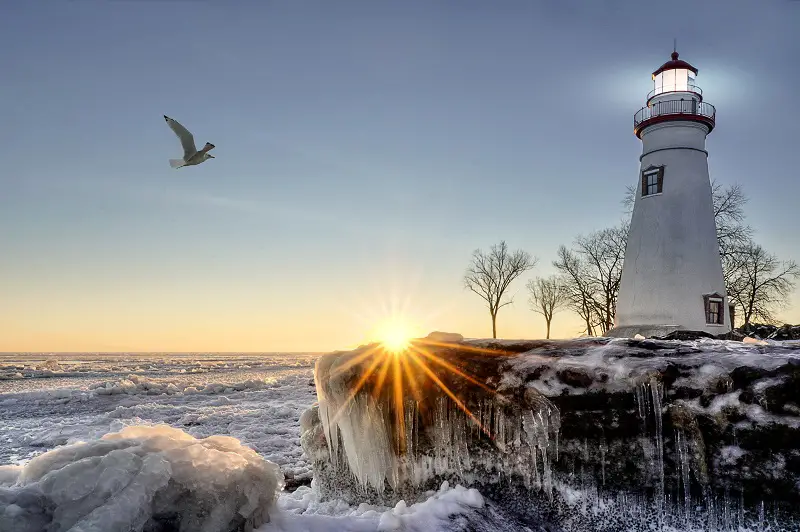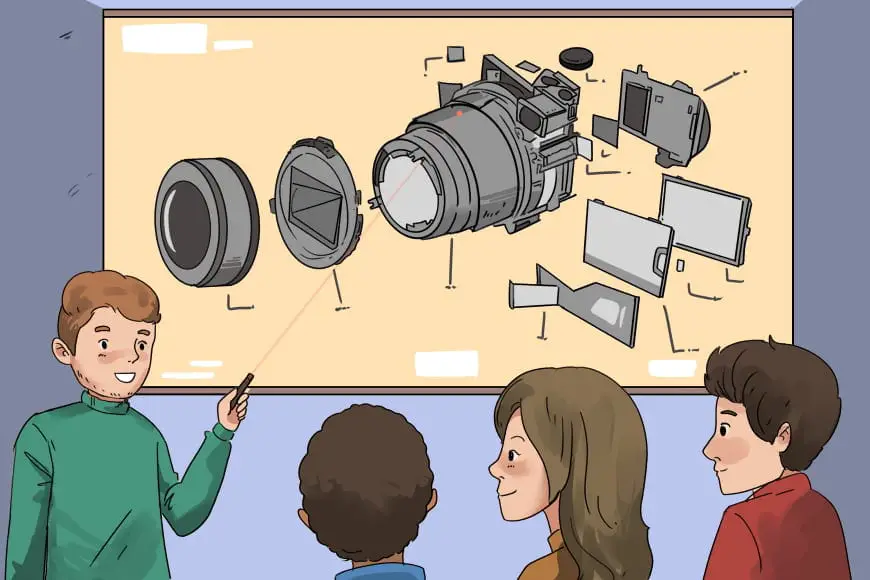
Seascapes have always been a favorite subject for all photographers. A seascape can be defined as being a combination of land, coastline, and sea. The seashore, the coastline, and even the oceanfront, there’s no limitation to what you can capture on camera as long as you’re in the right spot.
As with similar types of photography, such as landscape or cityscape, you must be patient and observant. You can’t control nature, but you can keep an eye on the surroundings and wait for the perfect moment.

Photographing Seascapes – 6 Tips You Must Know
Go out of season
You might want to stay away from crowded beaches, packed with tourists and ice cream trucks. It might be a bit more difficult to make actual art in these conditions. You will probably end up with a bunch of pictures of sunbathers in unflattering poses. This is why going off-season is a better option. You get to have the beach all to yourself, and you can shoot at either angle you want without the risk of someone photobombing your picture.
Another great thing about going off season is that you stand a better chance of finding a good spot to camp out. This way, you can get up early in the morning, make your way out of the tent, and you can start snapping picture right away. Mornings are a good time to catch the ideal light and the renowned ‘’golden hour”.
Pick your beach wisely
A common beach will most likely not allow for something other than some ordinary images. And if you really want to stand out, you will have to do better than that. Do a thorough research before going out, just to avoid the disappointment. Look for the most scenic beaches. You can ask the locals for indications, or you can do a search on a photography website (Flickr, Deviantart, etc.) and see where other photographers have taken stunning images.

Be patient
Timing is everything, especially in photography. And when you’re trying to photograph seascapes, the need to be patient becomes more obvious. Why? Because besides the lighting and the weather conditions, you also have the tricky tide.
Some might say that any time of day is good enough for seascapes. We beg to differ. We think that the golden hour is the ideal time frame you must consider in this situation, just as in most others. The golden hour comes about one hour before sunset and one hour after sunrise. That’s when the sun is low in the sky, thus creating a warm light that really makes the colors pop. So wait for that perfect time; otherwise, you will end up with a harsher light that will provide more washed out colors.
You may think we would recommend sunny, clear blue-skied days, but let’s peek beyond the ordinary. Storm clouds, rain, fog or mist, can work wonderfully in your favor. You’ll be able to take some dramatic shots that stand a better chance of awing the viewer.
And then we have the tide. Here’s how you work both high tide and low tide to your advantage. If you visit the beach during high tide, then you will be able to shoot crashing waves. When you visit the beach during low tide, you will be allowed to capture smaller objects that are otherwise more hidden – shells, starfish, crabs, and more.
The iconic lighthouses
Lighthouses will instantly improve your picture. Take out your wide-angle lens and use a slow shutter speed to capture the light beaming out of the lighthouse. Set a wide aperture (of about f/16) and don’t forget to bring a tripod to avoid image blurring.

Create a flat sea
To achieve this effect, you need a 10-stop neutral density filter. Before putting the filter on the camera, you first need to focus and to set the exposure. Once it’s on, you won’t be able to focus. Since the exposure will be long, you must bring a tripod and safely secure it to remain as stable as possible.
Create water trails
Another fun way to “play” with your composition is by creating sea/ocean trails. To accomplish the look, set the shutter speed somewhere between two seconds and eight seconds. Run some tests and see what works best. You’ll also have to use the neutral density filter, but this time, a 3-stop or a 6-stop filter will work better than the 10-stop one.
What to Pack – The Gear
Now that you know the basics, you must make sure you pack the minimum necessary camera equipment. Here are a few items that you need to carry with you.
Wide-angle lens
Choose a focal length wider than 35mm to best convey that sense of grandeur. However, you can shoot seascapes with pretty much any type of lens. Although you are not limited to a wide-angle lens, it would be ideal if you could get your hands on one. You will see why photographers favor these lenses for any “-scape” photography.
Tripod

A tripod should be an indispensable item in every photographer’s kit. A tripod will both prevent camera shake and keep it on the right level. If you plan on doing long exposures (and you will want to), you can’t avoid purchasing a rugged tripod.
Filters
You will also need the two most common filters for seascapes: a graduated neutral density filter and a neutral density filter.
The graduated neutral filters are often used at sunrise and at sunset. This is when the sky is far brighter than the foreground. Because this type of filter has a dark end, you can place it over the brightest part of the frame in order to achieve a balanced exposure.
Neutral density filters are used when you set a longer shutter speed than you would usually do in a certain light condition. You will commonly find 3-stops, 6-stops, and 10-stops filters, depending on their strength.
Microfiber cloth
Regardless of the weather, you will probably have to deal with salt and sand. This is why you must carry a microfiber cloth with you and wipe the camera clean after you’re done shooting.





